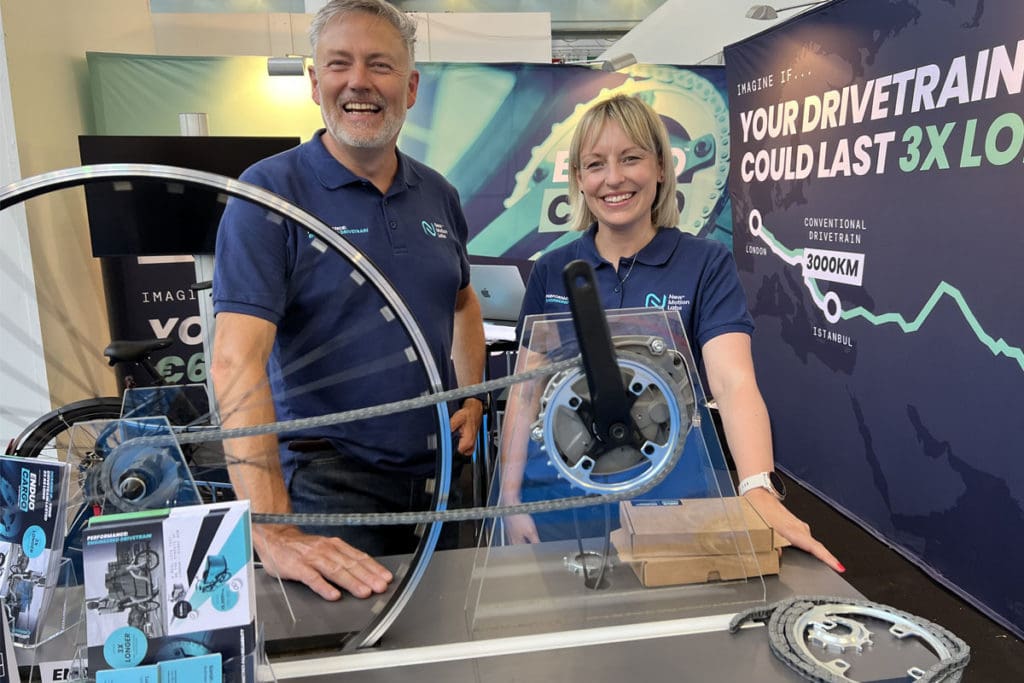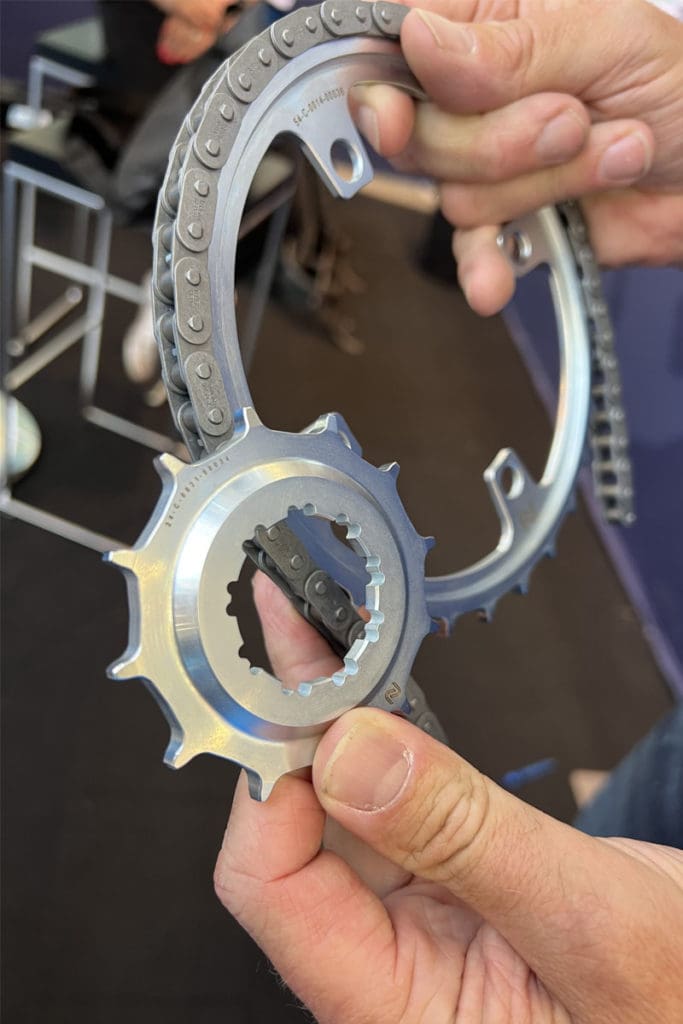Could This be a Breakthrough in Chain Durability?

Frankfurt, Germany
In a relatively small booth at Eurobike 2022 was a company claiming to have invented a new bicycle chain design that will triple the wear life compared to conventional chains.
That’s certainly a big statement for a product that’s only experienced incremental improvements over the past century. So what is the basis of their claim?
Steven Senior is a British industrialist with a blue chip background that includes senior engineering management at the Aerospace division of Rolls Royce and involvement in a range of successful engineering start-ups. He’s CEO of New Motion Labs (NML), a start-up with big ambitions in the bicycle industry.
“If you take a look at a traditional chain, the roller and the interaction (with the chainring and rear cog teeth as they rotate) is a relative movement,” he explained. “When you get relative movement, you get heat and then you get wear.
“If you made it so that you drive off both sides of the tooth, there is no relative movement, no heat, low wear.”
To try to explain this in simple, no doubt inaccurate terms (from an engineer’s perspective), for traditional chains the roller rolls back and forth as it engages then disengages with each tooth, but the NML-designed chain immediately ‘wedges’ onto both sides of the more widely spaced chainring and cog teeth, so the rollers don’t move.

Steven continued: “The chain drive has not been re-engineered for a hundred years in any significant way. What we’ve done is produce a worldwide patent on this technology and we are disrupting the industry. So we’re looking at the largest chain manufacturers, the largest fleet operators of cargo bikes, the largest fleet operators and OEMs of e-bikes, because under those high-load situations, chain wear is the biggest issue.
“We’re eventually going to take this technology to the industrial market, but we really want to be part of this sustainable journey like cargo bikes. Our team has been developing this over the past three years. We come from an engineering background.
“The largest chain manufacturers are already testing this and thinking about licencing this straight away. This has been IWIS tested – one of the largest chain manufacturers in the world, more in the industry sector rather than cycling, who have confirmed all of our data.
“We’ve had fleet trials on cargo bikes through the streets of London. Whereas a normal chain might last 4,000 kilometres on those bikes, we already have chains running up to 12,000 kilometres in those live trials.”
I felt that the obvious question had to be asked, “It seems so simple. Why has no-one thought of this before?”
To which Steven’s reply was: “Well isn’t that what innovation is? You don’t know, what you don’t know until you do it!”
“We’ve had one of the largest component manufacturers approach us at this show already. There’s companies out there with amazing scale. There was a fleet operator who came to see us this morning who has 300,000 bikes in his fleet. The cycling industry is far bigger than most of us think.”
